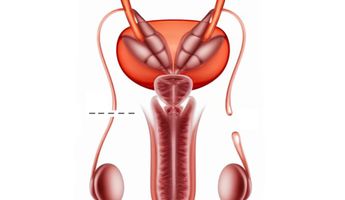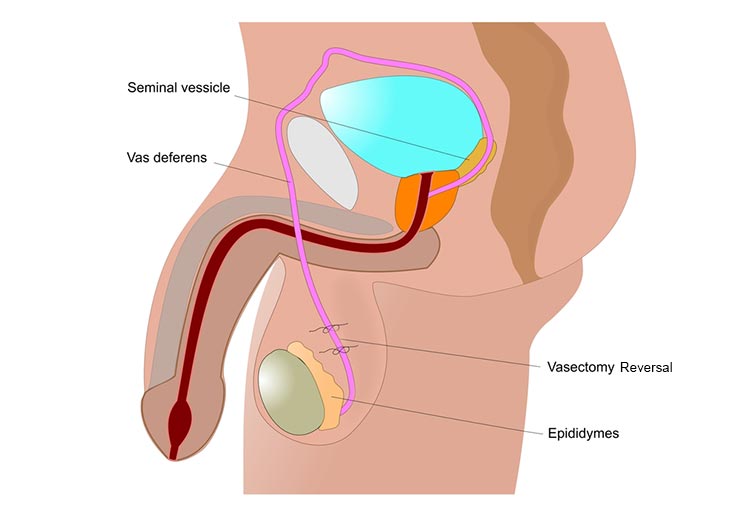Reverse Vasectomy in Ho Chi Minh City
Search and Compare the Best Clinics and Doctors at the Lowest Prices for Reverse Vasectomy in Ho Chi Minh City

Find the best clinics for Reverse Vasectomy in Ho Chi Minh City
No pricing info available
Czech Republic offers the best prices Worldwide
Price: $ 322
From 3 verified reviews
Sherwin Lucas, 05 August 2019
One of the best private hospitals in Ho Chi Minh City with reasonable prices, adequate equipment and clean rooms. Hospital has testing services, vaccines, CT scans, accommodation, emergency.
From 3 verified reviews
Kyungjin Choi, 30 August 2019
Always full of people,the treatment here is pretty good
WHY US?
At Medijump, we're making medical easy. You can search, compare, discuss, and book your medical all in one place. We open the door to the best medical providers worldwide, saving you time and energy along the way, and it's all for FREE, no hidden fees, and no price markups guaranteed. So what are you waiting for?

Free

Best Price

Widest Selection

Risk-Free
What you need to know about Reverse Vasectomy in Ho Chi Minh City

Vasectomy is a procedure in which a male’s vas deferens tube is sealed, cut or tied to prevent the passage of sperms to the urethra. This is a permanent contraceptive technique to avoid fertilization of egg through sexual intercourse. The reversal of this method is known as reverse vasectomy. In this procedure, the ligated vas deferens tube is re-connected. It is an expensive and complicated procedure with not a great success rate. After going through this, the fertility of a male is restored and he is able to get his partner pregnant. Reverse vasectomy can be performed at any time even after a gap of 10-15 years as the sperms are continuously been produced and are viable. The pregnancy rates after this can be as low as 30% to as high as 90% depending upon the procedure used. Only 6% of all the men gone through vasectomy go for a reversal technique.
What does a Reverse Vasectomy Procedure Involve?
The surgery is performed under local, general, or regional anesthesia under the supervision of an expert urologist. A cut is given on the scrotum which opens it making the ductus deferens visible. The duct is released from the surrounding tissues and the doctor proceeds with the surgery. There are two known methods for the reversal of vasectomy:
- Vasovasostomy: In this method cut edges of the vas deferens are connected together through stitches. The surgeon sews the ends of this tube together. This reconnects the ductus deferens and the path of semen from testes to the penis is restored. This method has a lower success rate than vasoepididymostomy.
- Vasoepididymostomy: This procedure is far more complex than the one mentioned above and is performed only when the success rate seems very low with vasovasostomy. In vasoepididymostomy, severed vas deferens is connected to epididymis rather than the other end of the tube. This results in a direct transfer of sperms into the semen present in the duct. The success rate is higher in this method. Sometimes both these procedures are performed side by side. Vasovasostomy at one side and vasoepididymostomy at the other.
Only the urologist can decide which procedure should be chosen for you. However, a vasovasostomy is performed if the sperms are present in the vasal fluid. If not, vasoepididymostomy is performed. It causes the sperms to move from testes to epididymis and from epididymis to the vasal fluid.
How Long Should I Stay in Ho Chi Minh City for a Reverse Vasectomy Procedure?
Performed in the outpatient department, reverse vasectomy is not a lengthy procedure. The surgery requires only 2 to 4 hours after which the patient is discharged on the same day from the hospital after he returns to consciousness. Still, the patient is under the influence of anesthesia so he needs someone to be with him. As far as stitches are concerned, they dissolve themselves after a few days. You should plan to stay in Ho Chi Minh City for at least 2 to 3 days after your surgery, this will allow for the initial recovery and follow-up check-ups, etc.
What's the Recovery Time for Reverse Vasectomy Procedures in Ho Chi Minh City?
The recovery time after a reversal vasectomy varies from person to person. It usually takes 5 days to 2 weeks for the recovery. In the first few hours, the patient is woozy due to anesthesia. There is nausea, muscle pain, swelling, fatigue, and sore throat. After the effects of anesthesia fade away the day after surgery, pain is elevated. The recovery process is completed in 2 weeks.
What sort of Aftercare is Required for Reverse Vasectomy Procedures in Ho Chi Minh City?
The incision is stitched and covered with bandages. There is pain after surgery which varies from moderate to severe. Pain killers are prescribed to relieve the aching body. For soreness and swelling, ice packs are used. Keeping your legs above the head level might also be beneficial in reducing swelling. Ice packs are applied every half an hour for 10 minutes. Bed rest should be taken to avoid excessive movement of testes during activity. Ask the doctor when to remove the bandages. Besides all the things mentioned above, the following points should be kept in mind:
- Keep the site of surgery dry. Avoid taking a bath or swimming for at least 1-2 days after surgery.
- Avoid all such activities which cause excessive testicle movements such as jogging, running, etc. for 6 to 8 weeks after being operated upon.
- Use sports underwear for several weeks which is tight enough to keep the testes in place.
- Do not have sexual intercourse soon after undergoing surgery. Ask your surgeon when it is fine to have intercourse and to ejaculate. You should not be ejaculating for 2 to 3 weeks after surgery.
- It is advised to take rest if your job is hectic and requires physical work. However, if you do office work, you can return to it a few days after surgery.
What's the Success Rate of Reverse Vasectomy Procedures in Ho Chi Minh City?
The success rate is variable and depends upon the individual case. Sperms come into the semen after 4 to 6 months of surgery. Your doctor regularly checks your sperm count till it returns to normal. In vasovasostomy, 6 to 12 months are required to restore the normal sperm count in the semen. While in the case of vasoepididymostomy, it might take longer. Once the sperms come back to the semen, chances to conceive can increase with the passage of time. the success rate also depends upon a number of other factors including any other illness or disease, age of female partner and the quality and quantity of sperms present in the semen.
Are there Alternatives to Reverse Vasectomy Procedures in Ho Chi Minh City?
A reverse vasectomy might not always be successful. There are various reasons for its failure such as any other testicular diseases. In case it fails, another surgery can be performed. If it does not work, following is the alternative for reverse vasectomy:
In vitro fertilization (IVF) of the ovum: Sperms are removed directly from the testes or epididymis using a syringe or through surgery. Success rates are higher if the female partner is younger. This procedure is way more expensive than the reversal of vasectomy. Also, there are no chances of another pregnancy. While reversal is cheaper, aids in natural birth and chances of future pregnancies are also there.
Fertilization through a donated sperm is another option. You can either get sperm from a suitable donor from a sperm bank or you can use your own frozen sperms that were stored before vasectomy. Sperms are removed through a syringe and frozen under suitable conditions.
Whilst the information presented here has been accurately sourced and verified by a medical professional for its accuracy, it is still advised to consult with your doctor before pursuing a medical treatment at one of the listed medical providers
No Time?
Tell us what you're looking for and we'll reachout to the top clinics all at once
Enquire Now

Popular Procedures in Ho Chi Minh City
Prices Start From $500

Prices Start From $2,473

Prices Start From $683

Prices Start From $275

Recommended Medical Centers in Ho Chi Minh City for Reverse Vasectomy

- Interpreter services
- Translation service
- Religious facilities
- Medical records transfer
- Medical travel insurance
- Health insurance coordination
- TV in the room
- Safe in the room
- Phone in the room
- Private rooms for patients available

- Interpreter services
- Translation service
- Religious facilities
- Medical records transfer
- Medical travel insurance
- Health insurance coordination
- TV in the room
- Safe in the room
- Phone in the room
- Private rooms for patients available

- Interpreter services
- Translation service
- Religious facilities
- Medical records transfer
- Medical travel insurance
- Health insurance coordination
- TV in the room
- Safe in the room
- Phone in the room
- Private rooms for patients available
Reverse Vasectomy in and around Ho Chi Minh City
About Ho Chi Minh
Ho Chi Minh City also referred to by its former name of Saigon, is Vietnam’s largest city. Although it is busy and chaotic, the city is actually teeming with wonderful shops, intriguing history, delicious food, and fantastic nightlife. While many people normally come to the city to explore its temples and museums, there’s also a growing trend of medical tourism. More and more people are coming to the city to take advantage of healthcare. One of the main reasons behind Ho Chi Minh’s emerging popularity in medical tourism is affordable prices. It’s more affordable to have any treatment performed here than in Thailand and Singapore.
Popular Parts of Ho Chi Minh
There are 19 districts in Ho Chi Minh, but the most popular one is District 1 (also known as Saigon District), which serves as the city center. Here, visitors can find bars, restaurants, cafés, and iconic landmarks. Some of the most popular attractions in this district are the Bitexco Tower Skydeck, the Independence Palace, the Notre Dame Cathedral and Post Office, Bui Vien Street, and Nguyen Hue Walking Street. Besides District 1, Chinatown or Cholon is also very popular as it is home to the biggest Chinese community in this country, and Binh Tay Market is its main draw. Full of great food, history, and wonderful sights, this area is an excellent place to wander around and have fun.
Transport in Ho Chi Minh
The main gateway to Ho Chi Minh is the Tân Sơn Nhất International Airport, which is the busiest airport in Vietnam. It serves flights to and from numerous cities in Asia, including Bangkok, Singapore, and Seoul. There are also several low-cost airlines available for budget travelers, such as VietJet Air and Jetstar Pacific Airlines. To get around the city, buses, taxis, Xe Om (motorcycle taxis), Cyclos, and Grab Taxi (similar to Uber) are available. Buses are comfortable, but taxis and Grab Taxi are the easiest way to travel around. Xe Om and Cyclos are affordable, but they tend to be suitable for short-distance trips only.
Visas in Ho Chi Minh
Vietnam allows citizens of 24 countries, including the UK, Denmark, and Cambodia, to enter and stay in the country for up to 90 days without a visa. Other nationalities need to apply for a visa. The country has an electronic visa system available for citizens of 81 countries.
Weather in Ho Chi Minh
Ho Chi Minh has a tropical monsoon climate and the average temperatures remain all year round. December to March is the dry season, with the temperatures ranging from 21°C to 34°C. May to September is the wet season, which experiences frequent rain showers. July to November is the peak period for typhoons.
Additional Info
- Local Currency: The official currency is the Vietnamese Dong (VND). 1 USD is equivalent to 23,270 VND.
- Money & Payments: ATMs are widespread. Credit cards are accepted at most hotels, but always bring cash with you. Tipping is appreciated, but not expected.
- Local Language: The official language is Vietnamese. English is widely spoken, particularly in tourist areas.
- Local Culture and Religion: The constitution provides for freedom of worship. Vietnamese folk religion is a major religion, but many people are not religious. Other religions, such as Buddhism and Christianity, are freely practiced.
- Public Holidays: New Year’s Day, Tet Holiday, Reunification Day, International Labor Day, and National Day are some of the most celebrated holidays in Ho Chi Minh.
Popular Searches
- Plastic Surgery in Thailand
- Dental Implants in Thailand
- Hair Transplant in Thailand
- Breast Augmentation Thailand
- Gastric Sleeve in Thailand
- Gender Reassignment Surgery in Thailand
- Laser Hair Removal in Bangkok
- Botox in Bangkok
- Dermatology in Bangkok
- Breast Augmentation in Bangkok
- Coolsculpting in Bangkok
- Veneers in Turkey
- Hair Transplant in Turkey
- Rhinoplasty in Turkey
- Stem Cell Therapy in Mexico
- Rhinoplasty in Mexico
- Liposuction in Mexico
- Coolsculpting in Tijuana
- Rhinoplasty in Korea
- Scar Removal in Korea
- Gastric Sleeve in Turkey
- Bone Marrow Transplant in India
- Invisalign in Malaysia
- Plastic Surgery in the Dominican Republic
- Tummy Tuck in the Dominican Republic
- Plastic and Cosmetic Surgery in Poland
- Rhinoplasty in Poland
- Hair Implant in Poland
- Dental Implants in Poland
- IVF in Turkey

